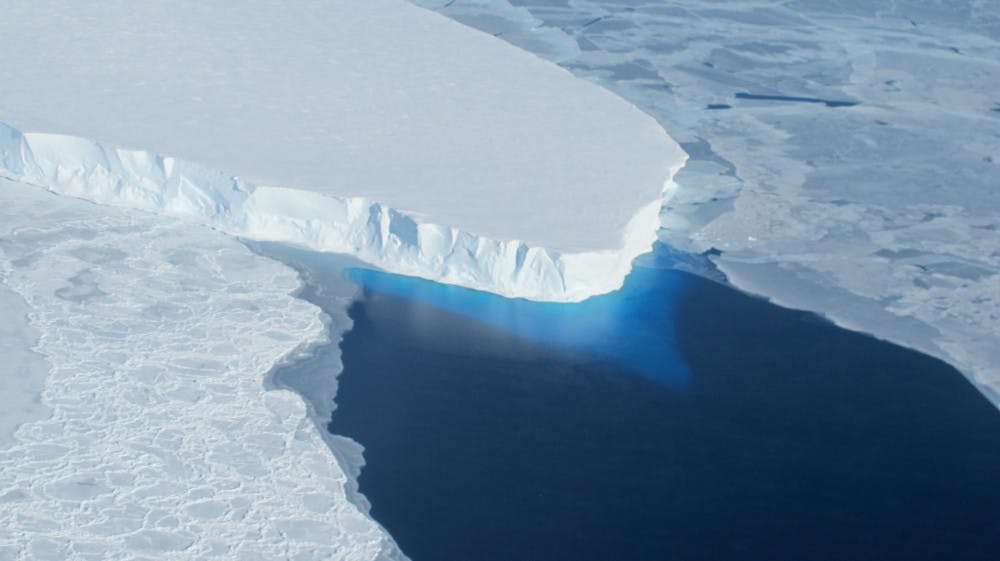A NASA-led (National Aeronautics and Space Administration) study recently discovered an enormous cavity, comparable to two-thirds the area of Manhattan, at the bottom of the Thwaites Glacier in West Antarctica. The cavity is much bigger than expected, a surprising find that scientists hope will lead to better models of glacial melting and their impact on sea level rise.
Although the researchers who were part of the study expected to find some cavities between the ice and bedrock at the bottom of Thwaites, where ocean water could flow and melt the glacier, the size and rapid growth rate of the cavity they found surprised them. They estimate that the cavity contained 14 billion tons of ice that melted over the course of the last three years.
Eric Rignot, the co-author of the new study published in Science Advances and a member of the University of California, Irvine and NASA’s Jet Propulsion Laboratory in Pasadena, Calif., discussed the team’s findings in a press release.
“We have suspected for years that Thwaites was not tightly attached to the bedrock beneath it. Thanks to a new generation of satellites, we can finally see the detail,” Rignot said.
The cavity was found using NASA’s Operation IceBridge, which uses an ice-penetrating radar to study the poles and global warming. The researchers also used Italian and German radars to compile a timelapse of how the ground below the glaciers had changed.
Pietro Milillo, the lead author, explained why the growing cavity could spell trouble.
“[The size of] a cavity under a glacier plays an important role in melting. As more heat and water get under the glacier, it melts faster,” Milillo said, according to ScienceDaily.
Current models don’t account for the changing shape of the cavities, which is likely why scientists didn’t predict that Thwaites would have lost so much ice.
Already accounting for four percent of global sea level rise, Thwaites could hold enough water to increase sea level by two feet if it completely melted. Thwaites also prevents nearby glaciers from melting, so all together the melting of Thwaites could lead to a sea level rise of eight feet.
For these reasons, the U.S. National Science Foundation and British National Environmental Research Council are mounting a five-year field project to obtain answers about this glacier’s processes and features. The International Thwaites Glacier Collaboration is expected to begin its work in the Southern Hemisphere in the summer of 2019.
Since there’s no way to measure the retreat of a glacier from the ground, scientists use airborne radars to measure features such as flow speed and surface height. They also watch for the change in grounding line, which is where the glaciers lift off the land and begin to float on seawater. While glaciers can often extend for miles beyond their grounding line, the influx of water wears away at the ice and forces the grounding line to retreat even further inland.
In Thwaites, the groundline retreat and the melting of ice seems paradoxal. On the western side, the grounding line fluctuates in a two to three mile zone because of changing tides, but since 1992 the grounding line has only retreated at a steady rate of 0.4 to 0.5 miles per year. However, the western side of Thwaites has seen an extremely high melting rate. The eastern side has experienced the opposite effects: The grounding line is retreating at 0.8 miles per year, while the melting rate is proportionally slow. This opposing evidence indicates that models for glacial melting should be more complex than they currently are.
Milillo hopes that an updated model could help scientists better understand the impacts of melting glaciers.
“Such data is essential for field parties to focus on areas where the action is, because the grounding line is retreating rapidly with complex spatial patterns,” Milillo said. Rignot agreed, noting the importance of the research. “Understanding the details of how the ocean melts away this glacier is essential to project its impact on sea level rise in the coming decades,” he said.





